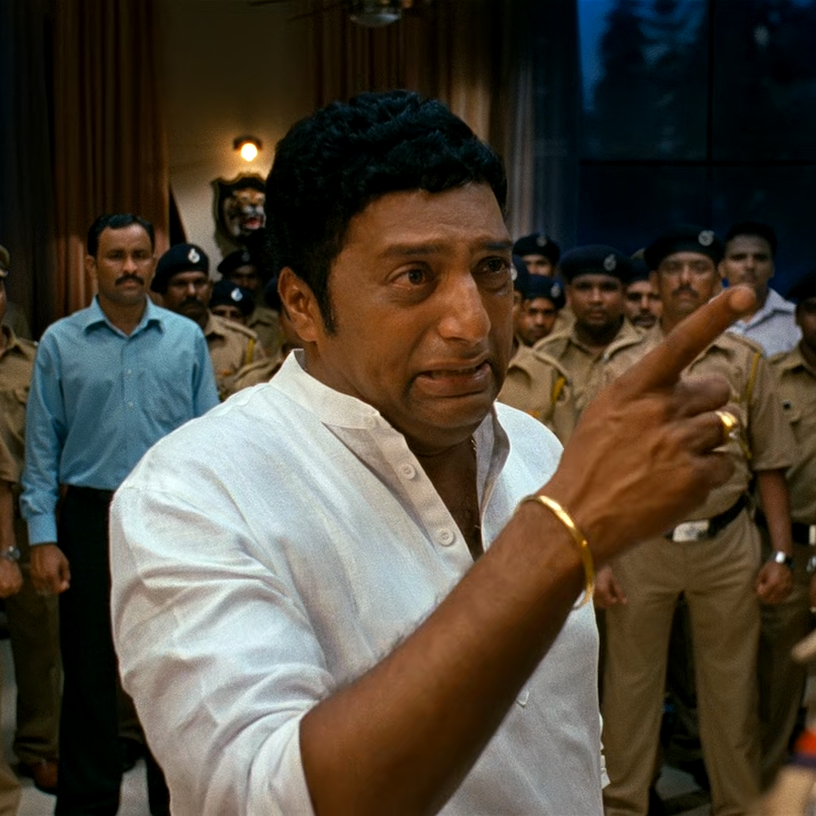The rich tapestry of Hindi cinema has been woven with countless memorable characters, but none quite as impactful as its villains. For decades, these iconic antagonists have sent shivers down our spines, made us laugh nervously, and sometimes even garnered more applause than the heroes themselves. Let's explore the most memorable villains who have left an indelible mark on Bollywood history.
The Golden Age Antagonists (1970s-1980s)
The 1970s marked the golden era of Bollywood villains, introducing characters that would become household names for generations to come. Gabbar Singh from "Sholay" (1975), portrayed masterfully by Amjad Khan, revolutionized how villains were portrayed in Indian cinema. His iconic dialogue "Kitne aadmi the?" (How many men were there?) still echoes in the halls of Indian pop culture.
During this period, Amrish Puri emerged as the quintessential villain, bringing gravitas to every role he embraced. As Mogambo in "Mr. India" (1987), his trademark line "Mogambo khush hua" (Mogambo is pleased) became so popular that it transcended the movie itself and entered everyday conversation.
The Sophisticated Criminals (1990s)
The 1990s saw the emergence of more sophisticated, suave villains who traded rural dacoity for urban crime. Danny Denzongpa's portrayal of Kancha Cheena in "Agneepath" (1990) brought a new dimension to villainy, combining ruthlessness with refined mannerisms.
Some notable characteristics of 90s villains include:
- Sharp business suits replaced traditional villainous attire
- International crime syndicates became common plotlines
- Psychological manipulation took precedence over physical intimidation
- Complex backstories gave villains more depth and relatability
The Modern Era Antagonists (2000s-Present)
The new millennium brought a paradigm shift in villain portrayals. Actors like Kay Kay Menon and Prakash Raj introduced subtlety and nuance to negative roles. The line between good and evil became increasingly blurred, with antagonists often justified in their actions through compelling backstories.
Notable Performances That Defined Villainy
Some performances stand out for their sheer impact and memorability:
-
Kulbhushan Kharbanda as Shakaal in "Shaan" (1980): His character, inspired by James Bond villains, introduced international sophistication to Bollywood antagonists
-
Pran as Malang Chacha in "Upkar" (1967): Demonstrated how a veteran actor could bring complexity to negative roles
-
Kajol in "Gupt" (1997): Broke gender stereotypes by portraying one of Bollywood's most shocking female antagonists
Impact on Popular Culture
These villains have influenced Indian popular culture in numerous ways:
- Their dialogues became part of everyday conversation
- Their mannerisms inspired countless parodies and tributes
- Their characters often overshadowed the protagonists
- Their portrayals influenced fashion trends and public behavior
Modern Evolution and Future Trends
Today's Bollywood villains are more nuanced and morally ambiguous. Recent standouts include Ranveer Singh's Alauddin Khilji in "Padmaavat" and Sanjay Dutt's Kancha in the "Agneepath" remake. These performances showcase how modern villains combine classical elements with contemporary sensibilities.
Legacy and Impact
The impact of these legendary villains extends beyond entertainment:
- They've influenced how antagonists are written in modern scripts
- Their performances serve as masterclasses for aspiring actors
- Their characters often address social issues and complexities
- Their portrayals have helped evolve the craft of character development
Conclusion
Bollywood's villains have evolved from being mere antagonists to complex characters that often drive the narrative. Their contribution to Indian cinema is immeasurable, creating a rich legacy that continues to influence filmmaking today. As cinema evolves, these iconic performances remain benchmarks for excellence in character portrayal, reminding us that sometimes the most memorable characters are not the heroes, but those who challenge them.
In the end, these villains didn't just oppose the heroes – they became legends in their own right, contributing to the rich tapestry of Indian cinema and creating a legacy that will continue to inspire future generations of filmmakers and actors.
